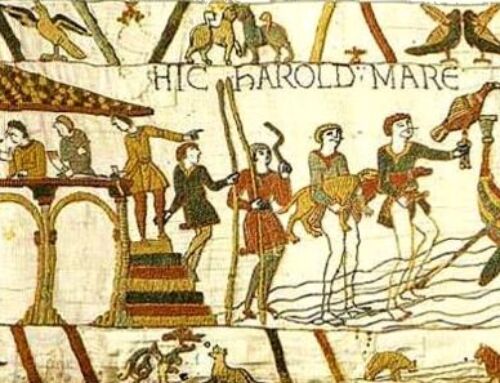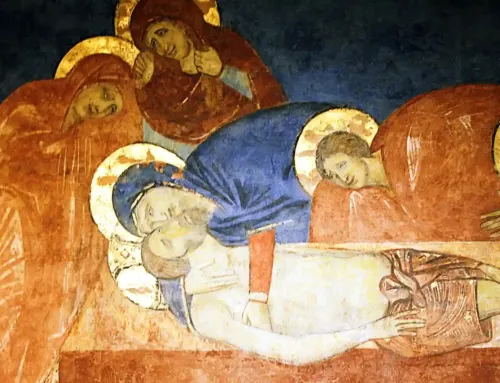I’m sure that the 19th century English hymn writer, Frances Havergal, never imagined her unassuming hymn, “Take My Life and Let It Be” (1874), would be brought out of its obscurity and made into an enchanting devotional piece nearly 150 years after she wrote it.
The poetry is simple, and the traditional hymn tune that accompanies it is plain. In its original design, it might have sounded like just another congregational song played on a piano in a small, unadorned country church.
Yet, Christian singer, Shannon Wexelberg, reached into the treasure chest of religious music, pulled out this little gem and gave it new life in her version of the hymn called Take My Life.
Like an old piece of tarnished jewelry that has been lovingly polished and restored, the hymn becomes deeply beautiful when augmented by Wexelberg’s lustrous voice and the audio-visual power of the modern age.
Word, sound, sight and emotion all converge in this dedication of a soul to Jesus Christ, King of kings and Lord of the universe.
The poem
Prior to viewing the video, take a moment to read the lyrics (just four short verses) and my brief description of the rhythm and structure of the hymn. I’ve added a few more points of reflection on the hymn afterward to draw out more spiritual meaning.
Take my life and let it be, consecrated, Lord, to Thee.
Take my hands and let them move, at the impulse of Thy love,
At the impulse of Thy love.
Take my feet and let them be, swift and beautiful for Thee.
Take my voice and let me sing, always, only, for my King,
Always, only, for my King. For my King!
Take my silver and my gold, not a mite would I withhold,
Take my moments and my days, let them flow in ceaseless praise,
Let them flow in ceaseless praise.
Take my will and make it Thine, it shall be no longer mine.
Take my heart it is Thine own, it shall be Thy royal throne,
It shall be Thy royal throne.
Rhythm and structure
Shannon Wexelberg’s performance is lyrical beauty itself, a fusion of her pure voice and perfect technique.
The piano’s purposeful rhythm accompanies the artist, alternatively leading and then following, giving a sense of two people walking along a placid seashore watching the sun slowly setting in the distance.
The rise and fall of the melody, the crescendo of the violins, the increasing intensity and then the denouement at the end all serve to draw the listener into the depths of the hymn’s beauty.
If you listen carefully, you will note the progression of instruments and voices throughout the course of the four verses:
Verse 1 – voice only, accompanied by soft piano
Verse 2 – piano, voice, with soft violins added
Verse 3 – piano, voice, violins, key change, intensity builds to high note
Verse 4 – denouement of piano, voice, and violins.
The performance (duration, 3:50)
Further reflection
The lyrics express the artist’s heartfelt love for our Lord, Jesus Christ. The phrase “for my king” is recited three times at the center of the hymn with a key change (at 1:33) to add depth and call attention to the sentiment: all is for Him, I am His, totally.
The only other phrase that occurs three times is “let them flow in ceaseless praise,” reflecting the flow of the river in the video. No doubt Frances Havergal would be utterly amazed at the modern visuals that make her simple hymn come alive.
At those words, we hear faint, ethereal background voices echoing the artist’s praises and evoking a sense of angelic affirmation from heaven. The spiritual and the material worlds unite here in praise of their Creator and Redeemer.
Notice the progression of gifts the artist offers to the King. She gives what is hers to give, reaching deeper into the human person with each offering: physical-temporal-moral-existential:
- Hands: the working person; the giver.
- Feet: the active person, echoing the scripture of Isaiah 52:7, “How beautiful on the mountains are the feet of him who announces the good news.”
- Voice: her word and her particular gift, which seems to flow effortlessly “in ceaseless praise.”
- Resources: silver and gold, symbolizing all human sustenance and dependencies; “not a mite do I withhold,” recalls the story of the widow’s mite in the Gospel (Mark 12:41-44).
- Time: moments and days; all her time; the span of her entire earthly existence.
- Self: Her very life.
Act of worship
Her final gift is the core of everything: the heart. (The word cor in Latin means “heart”.) Heart and will represent the very essence of the human person, and these are usually the last things to be surrendered.
The artist chooses to unite her will to His in one of the more beautiful phrases of the poem: “Make it Thine,” an allusion to Christ’s offering in the Garden of Gethsemane, “Not my will but Thine be done” (Luke 22:42).
The heart is also the biblical term meaning the total existence of the person, which is to become a “throne” where Christ may reign. It alludes to God’s throne in Heaven where perfect worship is rendered to the King (Revelation 4:4, 5:6-7).
The flowing river, the setting sun, the everlasting hills in the background – these elements visually reinforce what the words and music convey: that the artist’s offering is four minutes of pure worship.
Soul Work
Allow yourself to be swept along by the lovely melody with no thought of anything else but staying immersed in the beauty of Christ’s love. Immersion in such beauty and truth leads to contemplation.
Banish all other considerations and listen deeply. Make this hymn your prayer today.
If you have time, listen a second time and dwell on the lyrics as an expression of your (re-)commitment to the Lord Jesus and His life of grace.
Offer every part of you, specifically, as the artist has done. Let this song be your act of worship to the King of kings and Lord of lords.




July 29, 2021: here I am Lord: what do You want of me?